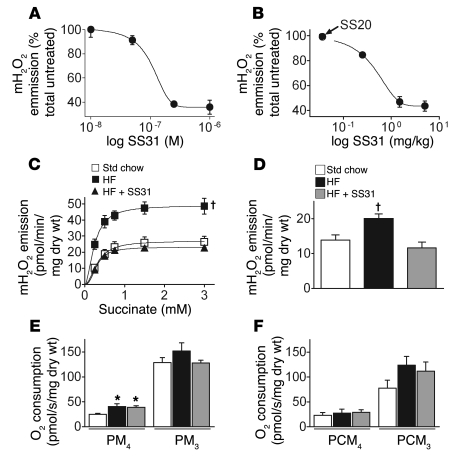Figure 2. The mitochondrial-targeted antioxidant SS31 prevents the increase in mitochondrial H2O2-emitting potential caused by high-fat diet in red gastrocnemius skeletal muscle of rats.
(A and B) Dose-response curves for mitochondrial H2O2 (mH2O2) emission following in vitro or in vivo administration of SS31. (A) Permeabilized fibers were briefly incubated in a range of SS31 concentrations prior to being assayed for maximal H2O2 emission under state 4 conditions (5 mM pyruvate/2 mM malate, 10 μg/ml oligomycin) in the presence of the complex III inhibitor antimycin A (10 μM). (B) Permeabilized fibers were assayed for maximal succinate-induced (3 mM) mitochondrial H2O2 emission under state 4 conditions (10 μg/ml oligomycin) approximately 2 hours following an acute intraperitoneal injection of SS20 (control peptide, 5 mg/kg) or varied concentrations of SS31. (C and D) SS31 ameliorates the increased mitochondrial H2O2 emission caused by high-fat diet. Permeabilized fibers were prepared from rats fed (6 weeks) standard chow, high-fat diet, or high-fat diet with daily SS31 administration, and H2O2 emission was measured during state 4 respiration (10 μg/ml oligomycin) supported by (C) succinate (as described in Figure 1) or (D) palmitoylcarnitine (25 μM) and malate (2 mM). (E and F) High-fat diet increases basal respiration with NADH-linked substrates, but SS31 has no effect. Permeabilized fibers were prepared from rats treated as indicated above, and respiration was measured with (E) pyruvate/malate (5 mM/2 mM) or (F) palmitoylcarnitine/malate (25 μM/2 mM) in both basal respiratory state 4 (PM4, PCM4) and maximal ADP-stimulated (2 mM) respiratory state 3 (PM3, PCM3). Data represent mean ± SEM; n = 4–6, *P < 0.05 vs. Std chow; †P < 0.05 vs. Std. chow and SS31-treated.

